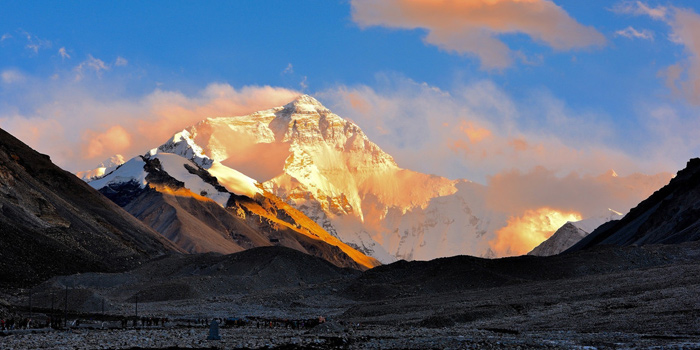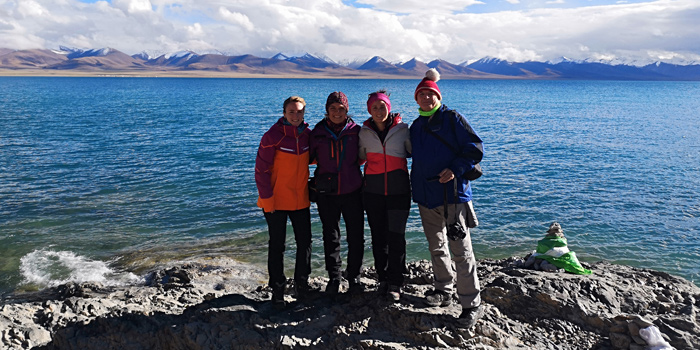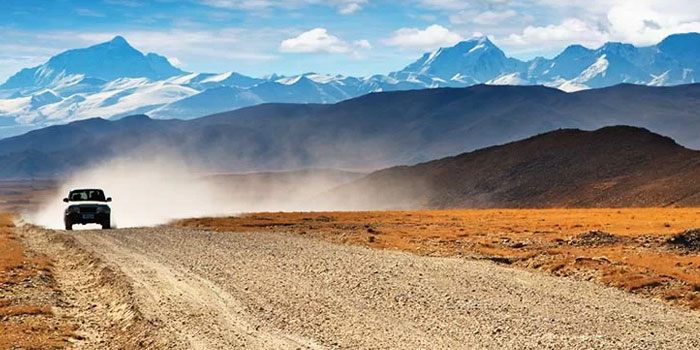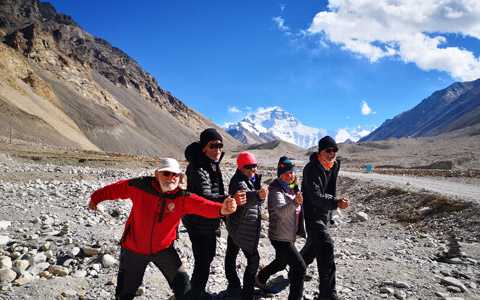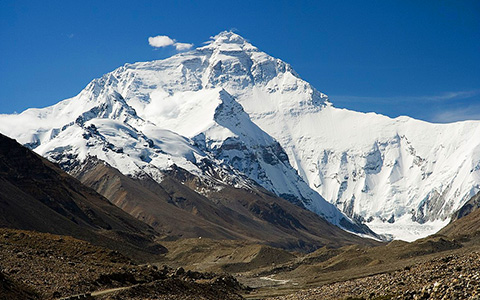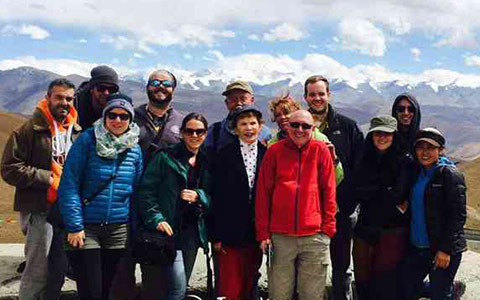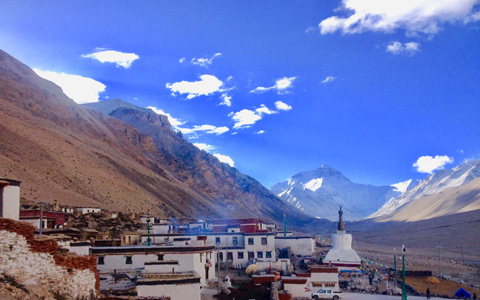Tibet Everest Base Camp Altitude and How to Prevent Altitude Sickness at EBC in Tibet
When it comes to the trip to Tibet especially the Everest base camp, many tourists are worried about the issue of high altitude, fearing that they may suffer from altitude sickness. Indeed, Tibet Everest Base Camp's altitude is as high as 5200 meters, making it one of the highest points in the entire Tibetan tourism area.
When facing these issues caused by the altitude at Tibet Everest Base Camp, there are some practical advice and measures that can help alleviate these concerns.
 1. The Altitude of Tibet Everest Base Camp is 5200 meters
1. The Altitude of Tibet Everest Base Camp is 5200 meters
 4. Effective Measures to Prevent Altitude Sickness when Traveling to Tibet Everest Base Camp
4. Effective Measures to Prevent Altitude Sickness when Traveling to Tibet Everest Base Camp
 5. Dealing with Altitude Sickness at Tibet’s Everest Base Camp: Adjusting Measures for Symptoms
5. Dealing with Altitude Sickness at Tibet’s Everest Base Camp: Adjusting Measures for Symptoms
 6. Tips for Preventing Altitude Sickness When Traveling to Tibet Everest Base Camp
6. Tips for Preventing Altitude Sickness When Traveling to Tibet Everest Base Camp
1. The Altitude of Tibet Everest Base Camp is 5200 meters
The Everest Base Camp in Tibet is located at an elevation of approximately 5200 meters, including the Everest Base Camp tent hotel area and the Rongbuk Monastery area. It is where ordinary tourists can tour and stay.
Within this area, about 300 meters from the base camp tents, there is the Tibet Everest Base Camp 5200-meter monument. In the same direction, about 200 meters from the 5200-meter monument, there is the monument marking the height of Mount Everest at 8848.86 meters.
If you're traveling to Tibet Everest Base Camp, be sure not to miss the opportunity to take photos with these monuments as the backdrop.
2. The Altitude of Tibet Everest Base Camp is only 1550 meters Higher than Lhasa, which Most People can Adapt to
Many tourists have misconceptions about altitude sickness when it comes to the 5200-meter altitude of Tibet Everest Base Camp. In reality, this altitude is a relative altitude, not an absolute one.
Compared to Lhasa's elevation of 3650 meters, Everest Base Camp in Tibet is only 1550 meters higher in relative terms. As long as you adapt well to the plateau environment at 3650 meters, the transition to 5200 meters is not very noticeable in terms of altitude, and most tourists can adapt well.
To help you acclimate to the high-altitude environment, our Lhasa to Everest Base Camp tour begins with approximately three days in Lhasa, allowing you to adjust to Tibet's altitude and climate.
During this time, you visit nearby attractions in Lhasa, such as the Potala Palace, Jokhang Temple, Barkhor Street, and Drepung Monastery. Afterward, you continue on to Tibet Everest Base Camp, usually choosing a route that takes you through the sacred Lake Yamdrok Tso and then from Shigatse to Tibet Everest Base Camp. This route not only allows you to enjoy the beautiful scenery of Lake Yamdrok, but also helps you alleviate potential altitude sickness.
 The altitude of the major points along the way from Lhasa to Everest Base Camp
The altitude of the major points along the way from Lhasa to Everest Base Camp
3. Everyone Traveling to Everest may Experience Altitude Sickness, but Most People Experience Mild Symptoms
Every person visiting Mount Everest may have symptoms of altitude sickness, but most people's symptoms are relatively mild. Even experienced our guides will have these symptoms. They may experience less sound sleep than they do in Lhasa, like easier awakenings at night. For tourists, a decrease in sleep quality at night is one of the most common symptoms of altitude sickness. More than 50% of tourists experience only slightly worse sleep quality and almost no other symptoms. Around 40% of tourists may experience mild symptoms such as headaches and difficulty falling asleep, which can typically be alleviated through rest and adaptation.
Only a very small number of tourists may experience the most severe symptoms, such as unconsciousness, vomiting, and bluish lips and nails. If you have any symptom mentioned above, it's necessary to notify your travel guide and evacuate from the base camp to lower altitudes and seek medical attention promptly.
4. Effective Measures to Prevent Altitude Sickness when Traveling to Tibet Everest Base Camp
When traveling to Everest Base Camp, it's advisable to learn about and take some preventive measures to prevent altitude sickness in Tibet.
Before traveling to Tibet Everest Base Camp, take time to rest and adapt to the high-altitude climate in Lhasa at 3650 meters or in Shigatse at 3845 meters. If you can acclimate well in these places, the likelihood of developing altitude sickness when traveling to Tibet Everest Base Camp is lower. Additionally, maintain a positive and optimistic attitude throughout your journey, avoid heavy exercise, and walk slowly, especially at higher altitudes.
In high-altitude areas, the air is drier, so it's important to ensure an adequate intake of water daily. It's recommended to drink at least 1500 milliliters of water each day, equivalent to the volume of three bottles of mineral water. Staying well-hydrated helps alleviate altitude sickness symptoms.
 Taking enough water during your Tibet Everest Base Camp tour can mitigate altitude sickness.
Taking enough water during your Tibet Everest Base Camp tour can mitigate altitude sickness.
Once you reach Tibet Everest Base Camp, you may experience bloating and a reduced appetite, but it's essential to continue eating. Eating provides you with the necessary energy, especially in this cold and energy-demanding environment. However, overeating is not suggested; feeling 70% full is sufficient, as overeating can lead to digestive discomfort.
When sleeping at night, remember to keep your head warm, as a cold head can lead to more severe headaches. It's recommended to wear a hat when sleeping at night to prevent cooling of the head.
If you're concerned about altitude sickness, you can also choose to stay in the Zhaxizong Township, which is at an elevation of approximately 4200 meters, at a certain distance from Everest Base Camp. This location has a lower altitude relative to Everest Base Camp, offers stunning views of Mount Everest, and provides more comfortable accommodation options in high-end hotels. This may be a better choice for older individuals or travelers with children.
5. Dealing with Altitude Sickness at Tibet’s Everest Base Camp: Adjusting Measures for Symptoms
If you experience mild symptoms of altitude sickness, such as mild shortness of breath, dizziness, and headaches (common signs of oxygen deprivation), the best choice is to step outside of the tent, breathe in some fresh air, as the tents and lodges tend to be crowded with tourists, and this can quickly relieve the symptoms of oxygen deprivation.
For moderate symptoms of altitude sickness, such as headaches, dizziness, and shortness of breath, it's advisable to measure your oxygen saturation levels and immediately start oxygen therapy until the symptoms improve. Oxygen therapy can provide an adequate supply of oxygen, helping to alleviate breathing and headache issues.
In cases of severe altitude sickness symptoms, such as loss of consciousness, vomiting, and discoloration of the lips and nails, it's crucial to contact your guide immediately and evacuate from Everest Base Camp to lower-altitude areas. As long as you leave the high-altitude region, the symptoms will improve rapidly. When severe altitude sickness symptoms occur, do not continue to stay at Everest Base Camp, as it could endanger your life.
6. Tips for Preventing Altitude Sickness When Traveling to Tibet Everest Base Camp
Before visiting Tibet, it's advisable to undergo a comprehensive medical check-up to ensure that you do not have underlying health issues, such as cardiovascular problems, which can help ensure a safer and more enjoyable trip.
Before departing for Tibet, consult with a healthcare professional and prepare 1-2 types of anti-altitude sickness medications, such as Rhodiola, Diamox. Additionally, carry some medications for treating altitude sickness, such as glucose and high-altitude aid, for potential use if needed. To ensure your health, these medications for altitude sickness prevention should be purchased or taken under the guidance of a medical professional.
For the first two days of your Tibet tour, it's best to avoid taking showers. Bathing in high-altitude areas can lead to catching a cold, which may result in colds and fevers. Colds and fevers in high-altitude areas can trigger or exacerbate altitude sickness.
Conclusion
The altitude of Tibet Everest Base Camp is approximately 5200 meters, making it a dream destination for many travelers and an excellent choice for challenging oneself and getting close to nature.
While altitude sickness can be a potential challenge when heading to Tibet Everest Base Camp, with proper prevention and adaptation measures, you can overcome altitude sickness and create wonderful memories on the Roof of the World.

The Lhasa-born prodigy used to study business overseas, and got his Bachelor of Business in Nepal and India before moving back to his homeland. With pure passion for life and unlimited love for Tibet, Kunga started his guide career as early as 1997.
Responsible, considerate, and humorous, he devoted his entire life to guiding and serving international tourists traveling in Tibet. As a legendary Tibetan travel guru with 20-year pro guide experience. Currently, he is working in Tibet Vista as the Tour Operating Director. Whenever our clients run into trouble, he is your first call and will offer prompt support.
Related Articles & Posts
Most Popular Tibet Tour Packages
-

Lhasa - Gyantse - Shigatse - Everest Base Camp - Shigatse - Lhasa
USD939
View Details -

Lhasa - Gyantse - Shigatse - E.B.C - Saga - Kailash Trek - Darchen - Lake Manasarovar - Saga - Gyirong - Tingri - Lhasa
USD2059
View Details -

10 Days Lhasa to Everest Base Camp and Namtso Lake Small Group Tour
Lhasa - Gyantse - Shigatse - EBC - Shigatse - Lhasa - Namtso Lake - Damxung - Lhasa
USD1289
View Details -

8 Days Driving Across Himalaya Overland Adventure from Kathmandu to Lhasa
Kathmandu - Gyirong - Everest Base Camp - Tingri - Shigatse - Gyantse - Lhasa
USD1069
View Details -

4 Days Lhasa Impression Small Group Tour: Explore the Heart of Tibet and Mingle with the Locals
Lhasa
USD509
View Details -

Lhasa - Gyantse - Shigatse - Everest Base Camp - Gyirong - Kathmandu
USD979
View Details -

Lhasa - Gyantse - Shigatse- Lhasa
USD799
View Details -

13 Day Lhasa, Mt. Everest, Mt. Kailash, Lake Manasarovar and Kathmandu Adventure Tour
Lhasa - Gyantse - Shigatse - EBC - Saga - Darchen - Kailash Trek - Darchen - Saga - Gyirong - Kathmandu
USD2059
View Details


.jpg)



